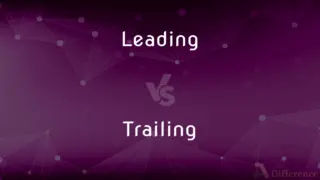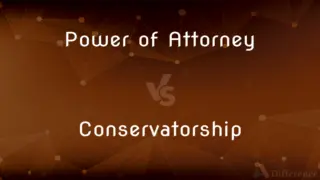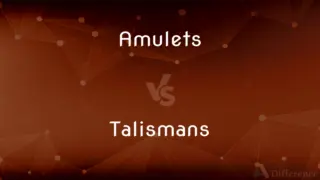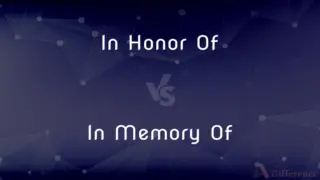Synectics vs. Brainstorming — What's the Difference?
Edited by Tayyaba Rehman — By Maham Liaqat — Updated on March 13, 2024
Synectics is a structured method focusing on creative problem solving through analogy and metaphor, while brainstorming emphasizes quantity of ideas through unrestricted group discussion.

Difference Between Synectics and Brainstorming
Table of Contents
ADVERTISEMENT
Key Differences
Synectics is a creative problem-solving approach that emphasizes the use of metaphorical and analogical thinking to explore and solve complex problems. On the other hand, brainstorming is a more widely known technique aimed at generating a large quantity of ideas in a short period.
While synectics leverages metaphors and analogies to stimulate creative thinking, brainstorming relies on the spontaneous generation of ideas. Conversely, brainstorming sessions can involve larger groups and are designed to be more inclusive, allowing for a wider range of ideas and perspectives.
Both synectics and brainstorming are valuable tools in the innovation process, but they serve different purposes and are chosen based on the specific needs of a project or problem. Synectics is particularly effective when a problem requires breakthrough thinking and innovative solutions, whereas brainstorming is best suited for situations where the primary goal is to generate a large volume of ideas, from which the best can be selected and further developed.
Synectics sessions often involve a smaller, more focused group working together to deeply explore a problem, using tools like direct analogy, personal analogy, and symbolic analogy. Brainstorming sessions are typically less structured than synectics, allowing participants to freely express any and all ideas without criticism or judgment. This open environment fosters a sense of inclusivity and encourages creative thinking.
Comparison Chart
Focus
Creative problem solving using analogies
Generating a large quantity of ideas
ADVERTISEMENT
Structure
Highly structured
Less structured
Process
Uses metaphorical thinking
Emphasizes spontaneous idea generation
Participant Role
Guided by a facilitator
Participants freely share ideas
Ideal Outcome
Innovative, unconventional solutions
Large volume of ideas for further selection
Compare with Definitions
Synectics
Emphasizes the role of a facilitator in guiding the process.
The facilitator used direct analogy to help us see the problem in a new light.
Brainstorming
A technique for generating a high volume of ideas in a group setting.
During the brainstorming session, ideas flowed freely without judgment.
Synectics
Encourages making connections between seemingly unrelated ideas.
By drawing an analogy to nature, we found a sustainable solution.
Brainstorming
Encourages participation from all members without criticism.
Everyone contributed unique ideas, thanks to the non-judgmental environment.
Synectics
Focuses on generating innovative solutions through structured discussion.
Our team's synectics approach led to a breakthrough product concept.
Brainstorming
Focuses on quantity of ideas rather than immediate quality.
We came up with over a hundred ideas in our last brainstorming meeting.
Synectics
Particularly useful in complex problem-solving scenarios.
Synectics helped us tackle a problem that seemed unsolvable at first.
Brainstorming
Suitable for initial stages of problem-solving and idea generation.
Brainstorming sessions are perfect for kickstarting our project brainstorming.
Synectics
A method of creative problem solving using guided analogy and metaphor.
In a synectics session, we used personal analogies to better understand user needs.
Brainstorming
Aims to foster creative thinking through spontaneity.
The spontaneous nature of brainstorming led to unexpected solutions.
Synectics
Synectics is a problem solving methodology that stimulates thought processes of which the subject may be unaware. This method was developed by George M. Prince (April 5, 1918 – June 9, 2009) and William J.J. Gordon, originating in the Arthur D. Little Invention Design Unit in the 1950s.
Brainstorming
Brainstorming is a group creativity technique by which efforts are made to find a conclusion for a specific problem by gathering a list of ideas spontaneously contributed by its members. In other words, brainstorming is a situation where a group of people meet to generate new ideas and solutions around a specific domain of interest by removing inhibitions.
Synectics
A problem-solving methodology that stimulates thought processes of which the subject may be unaware.
Brainstorming
A method of shared problem solving in which all members of a group spontaneously contribute ideas.
Brainstorming
A similar process undertaken by a person to solve a problem by rapidly generating a variety of possible solutions.
Brainstorming
A method of problem solving in which members of a group contribute ideas spontaneously.
Brainstorming
Present participle of brainstorm
Brainstorming
A group problem-solving technique in which members sit around a let fly with ideas and possible solutions to the problem
Common Curiosities
What is the role of a facilitator in synectics?
A facilitator guides the synectics process, helping participants make connections and explore ideas deeply.
What is synectics?
Synectics is a structured creative problem-solving process that utilizes analogy and metaphor to generate innovative solutions.
How does synectics differ from brainstorming?
Synectics is more structured and focuses on using analogies for creative solutions, whereas brainstorming emphasizes generating a large quantity of ideas with less structure.
How does brainstorming encourage idea generation?
Brainstorming encourages spontaneous and unrestricted sharing of ideas in a judgment-free environment to maximize creativity.
When should synectics be used?
Synectics is best used when complex problems require innovative and unconventional solutions.
Is synectics suitable for individual problem-solving?
While typically used in group settings, individuals can apply synectics principles for personal creative problem-solving.
Can brainstorming be used for all types of problems?
While brainstorming is versatile, it's especially effective in the initial stages of problem-solving where generating a wide range of ideas is beneficial.
Are there specific rules for brainstorming sessions?
The main rule is to avoid criticism and judgment during the idea generation phase to encourage free thinking.
What makes brainstorming effective?
The effectiveness of brainstorming lies in its ability to generate a broad array of ideas by leveraging the collective creativity of the group.
Does synectics require specialized training?
Facilitators often benefit from training in synectics to effectively guide the creative problem-solving process.
How do participants in a synectics session generate ideas?
Participants use metaphorical and analogical thinking, guided by structured exercises, to explore and solve problems.
How important is the facilitator's role in both methods?
In synectics, the facilitator's role is crucial for guiding the process, while in brainstorming, they mainly ensure a free and open idea exchange.
How can brainstorming sessions be made more effective?
Setting clear objectives, encouraging participation from all, and following up on ideas can enhance effectiveness.
What are the limitations of brainstorming?
The main limitation is the potential for surface-level ideas due to its focus on quantity over depth, unlike synectics, which delves deeper into creative problem solving.
Can brainstorming and synectics be used together?
Yes, combining both methods can be powerful; brainstorming for idea quantity and synectics for depth and innovation.
Share Your Discovery

Previous Comparison
Acidulous vs. Acid
Next Comparison
Leading vs. TrailingAuthor Spotlight
Written by
Maham LiaqatEdited by
Tayyaba RehmanTayyaba Rehman is a distinguished writer, currently serving as a primary contributor to askdifference.com. As a researcher in semantics and etymology, Tayyaba's passion for the complexity of languages and their distinctions has found a perfect home on the platform. Tayyaba delves into the intricacies of language, distinguishing between commonly confused words and phrases, thereby providing clarity for readers worldwide.















































